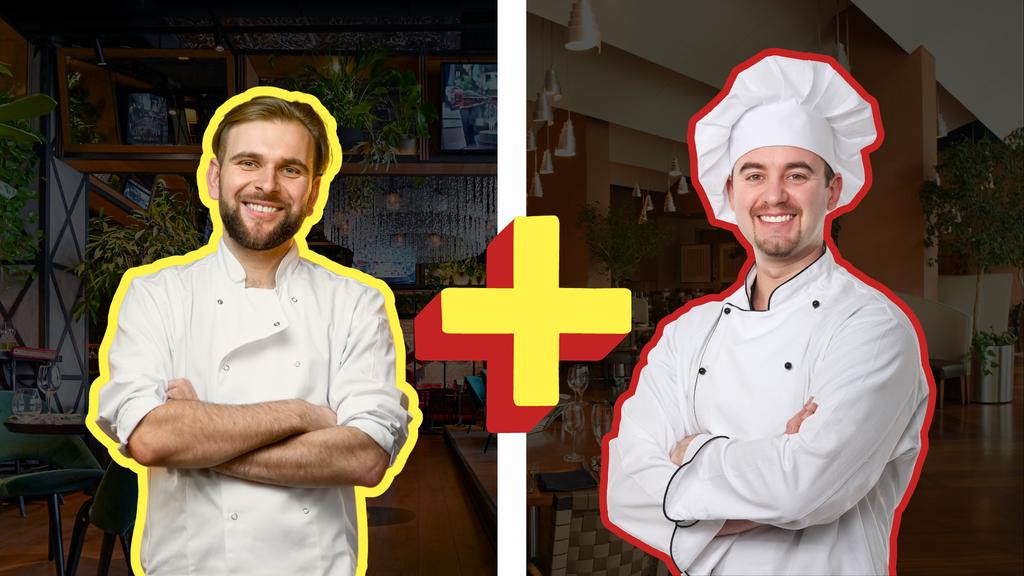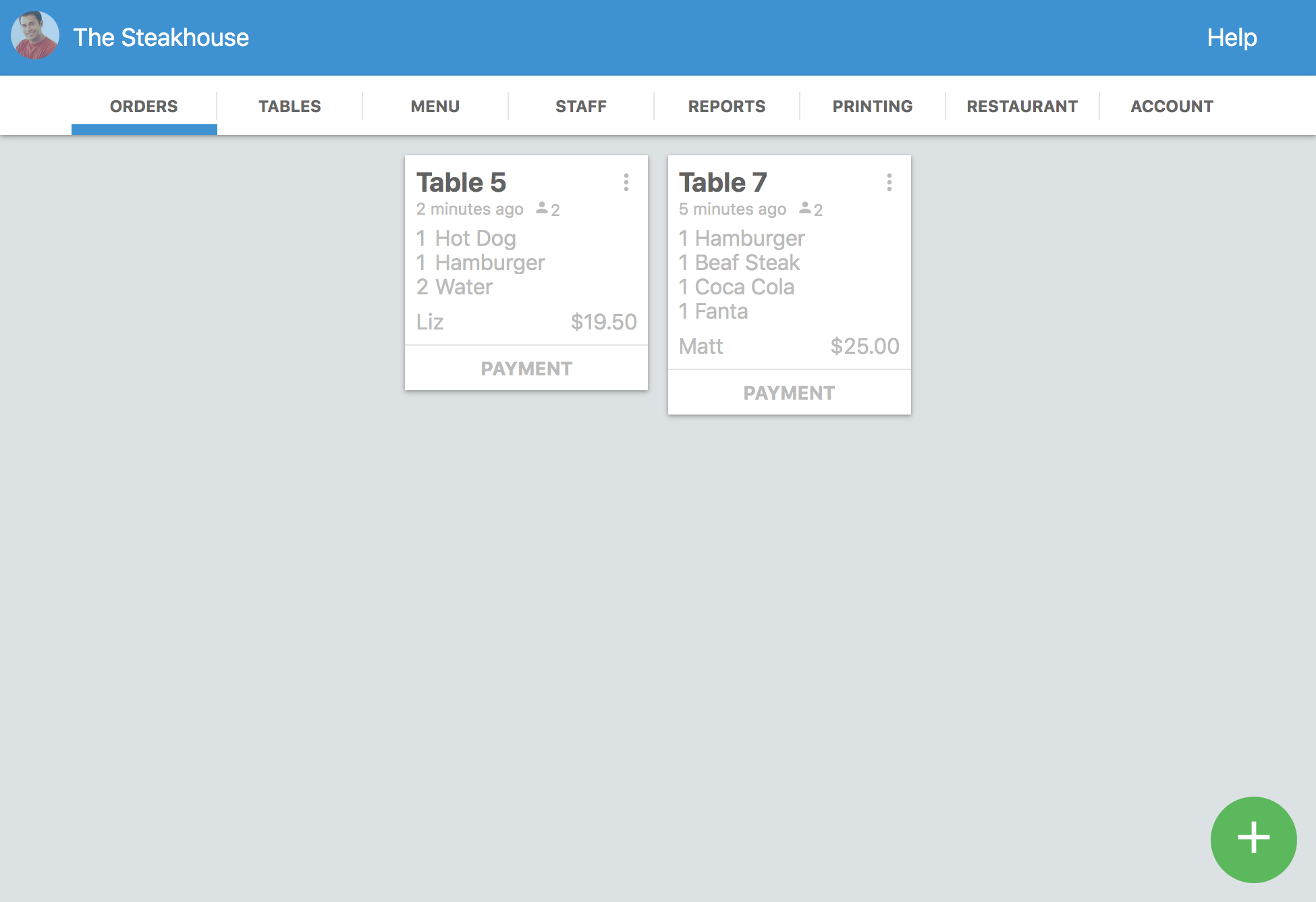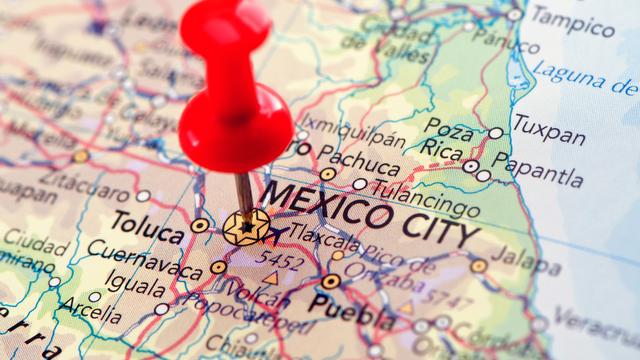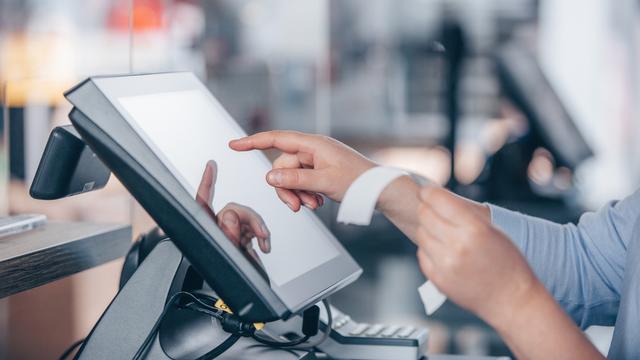Partnerships and collaborations have been used to amplify the success of several businesses throughout history. Sometimes, the marketing department of a single company is not enough to achieve success. Major restaurant chains and franchises have also benefited from these practices. But, as a small restaurant owner, you can garner the benefits of collaborating with other businesses, too. In this article, we’ll talk about the following:
- What are collaborations and partnerships in the context of restaurant marketing
- How they help your business achieve several goals
- I’ll share some of the most relevant partnerships that have shaped these practices across the industry
- And I’ll share some tips you can use to apply locally, in a smaller restaurant
Even though this is something used mostly by highly successful businesses, small and medium restaurants still have access to these practices. When applied correctly, they can be beneficial to achieve all kinds of objectives, such as improving sales, gaining customers, and overall improving the performance of your business. Let’s get right into it!
What Are Collaborations and Partnerships?

Let’s start by defining collaborations and partnerships. Simply put, they are what happens when two or more businesses come together and create a joint campaign to improve their performance. A simple example is when a toothbrush company pairs up with a toothpaste company to offer both products as a promotion to improve sales, supporting both products, among other goals. As a concept, this applies to any type of business – it’s somewhat similar to collaborating with influencers.
Benefits of Partnerships and Collaborations
There are many benefits to collaborations and partnerships, including
- Increased brand awareness and reach: When two or more businesses collaborate, they can tap into each other's customer bases and reach a wider audience. This can be especially beneficial for small businesses or businesses that are new to a market.
- Boosted sales: Collaborations can lead to increased sales for both businesses involved. For example, a restaurant that partners with a local brewery to offer a special beer and burger combo may see an increase in sales of both items.
- Enhanced customer experience: Businesses can create more unique and memorable experiences for their customers. For example, a clothing retailer that partners with a local artist to design a limited-edition collection can offer its customers something truly special.
- Reduced costs: Businesses can save money on resources, such as marketing and advertising. For example, two businesses can collaborate on a joint marketing campaign, reducing costs for both businesses involved.
- Increased innovation: Businesses can be more innovative and develop new products and services during collaborations. For example, a technology company that partners with a healthcare company may be able to develop new wearable devices that track health data more accurately.
That’s why collaborations and partnerships can be powerful tools for business growth. By working together, businesses can achieve more than they could on their own.
Types of Restaurant Partnerships and Collaborations

Of course, not all restaurant partnerships and collaborations are the same. They’re usually categorized using their main objectives. These are the three main types:
- Co-marketing partnerships: These partnerships involve working with another business to promote each other's products or services. For example, a restaurant could partner with a local dessert shop to market each other as the perfect complement.
- Product development partnerships: These partnerships involve working with another business to develop a new product or service. For example, a restaurant could partner with a local bakery to create a custom dessert for their menu.
- Cross-promotion partnerships: These partnerships involve promoting each other's businesses through their marketing channels. For example, a restaurant could partner with a local hotel to offer a special discount to hotel guests who dine at the restaurant.
Aside from these types of partnerships, there are mixed versions of these that allow more complex deals. For example, some companies develop products together and then become co-marketing partnerships, which is the best way both businesses can reach more customers within their target audience.
Short Case Studies
Now, I’ll give you a few examples of highly successful companies applying this strategy to boost their growth further. Again, these are only a few examples from the restaurant industry – you can find numerous examples of this strategy applied throughout different industries.
1. McDonald’s and Travis Scott

This is an interesting example of when companies choose the right partnership to achieve specific goals. Of course, this is much more similar to influencer marketing. However, let’s overlook that – any artist as prolific as Travis Scott can be considered as valuable as a company in the context of a partnership. Let’s break down this deal:
- Challenge: McDonald's wanted to appeal to a younger demographic and increase sales.
- Solution:McDonald's partnered with rapper Travis Scott to create the Travis Scott Meal, which included a Quarter Pounder with cheese, bacon, lettuce, and Scott's signature barbecue sauce, as well as fries and a Sprite. The meal was launched in 2020 and ran for a limited time.
- Results: The Travis Scott Meal was a huge success, generating over $1 billion in sales in its first month. McDonald's also saw a significant increase in social media engagement and brand awareness during the promotion.
Key takeaways:
- The collaboration was successful because it targeted McDonald's target audience, which is young adults. Travis Scott is a popular rapper with a large following of young fans.
- The meal was also successful because it was unique and limited-edition. This made it more appealing to customers and created a sense of urgency.
- The promotion was also well-promoted on both McDonald's and Travis Scott's websites and social media channels. This helped to ensure that a large number of people were aware of the promotion.
- This collaboration increased the stock price of McDonald’s by slightly over 6% during 2020 Q4.
2. Taco Bell and Xbox
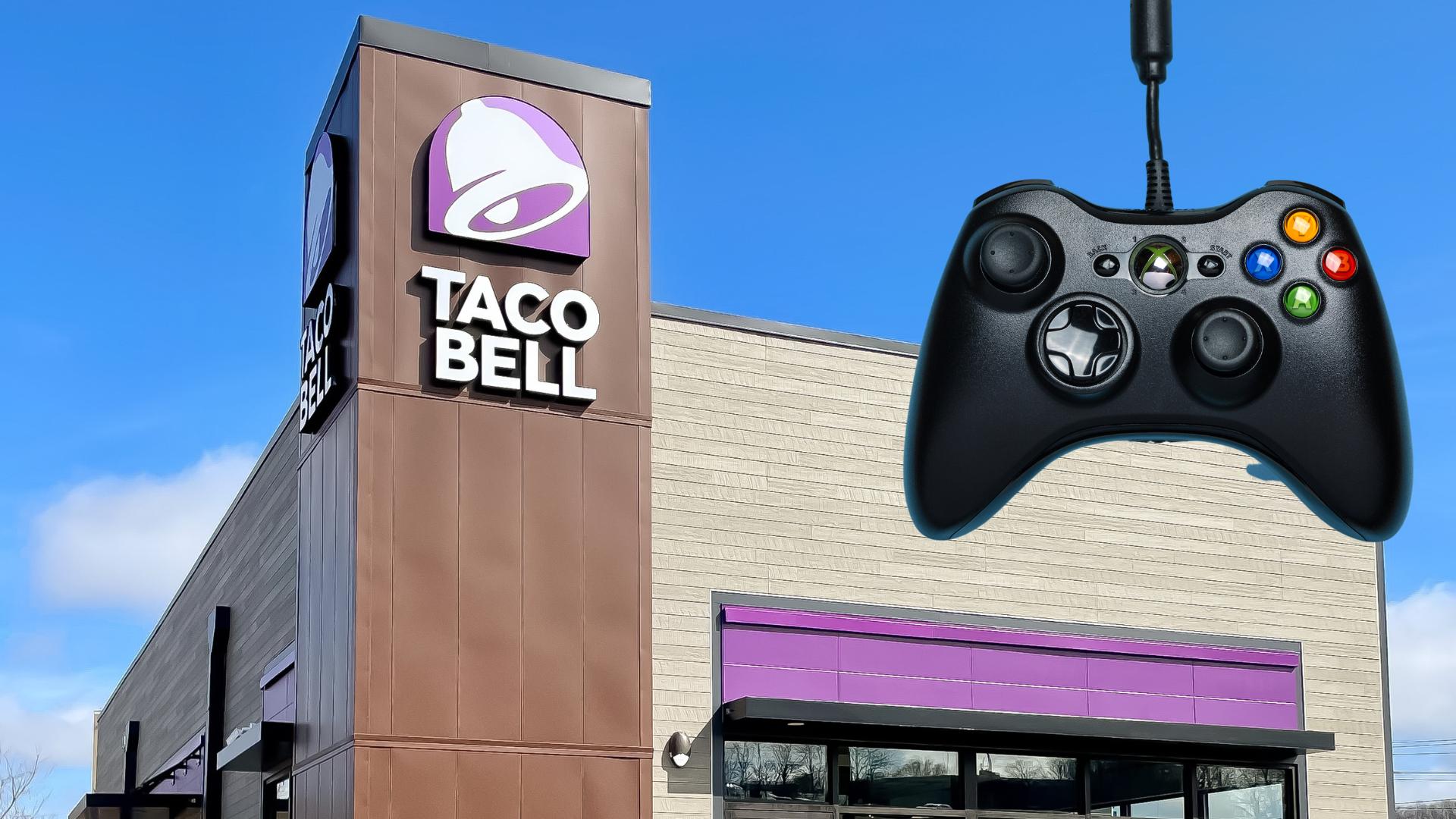
Taco Bell and Xbox – two beloved companies on their own. But together, they created the most amazing, rather unexpected, and highly successful partnership that has withstood the passage of time. Starting with their first collaboration in 2001, when Taco Bell became the very first Xbox partner. This partnership has been renewed time and time again, making it a staple for both Xbox gamers and Taco Bell enthusiasts. Let’s take a look at this interesting partnership example:
- Challenge: Taco Bell wanted to increase sales and appeal to gamers.
- Solution: Taco Bell partnered with Xbox to offer customers exclusive Xbox rewards, such as free game downloads and discounts on Xbox hardware, with the purchase of Taco Bell meals.
- Results: The partnership has been a success for both companies. Taco Bell has seen a significant increase in sales, and Xbox has seen a boost in engagement. The partnership has also helped to increase brand awareness for both companies.
Key takeaways:
- The collaboration was successful because it targeted both Taco Bell and Xbox's target audiences. Taco Bell's target audience is young adults, and Xbox is among the most popular gaming consoles for young adults.
- The partnership also offers customers valuable rewards, such as Xbox game passes, console prices, and more, which incentivizes customers to purchase Taco Bell meals and engage with Xbox.
- The partnership was also well-promoted on both Taco Bell and Xbox's websites and social media channels, including common gaming-related social channels. This is also supported by the fact that it’s one of the most renowned ongoing partnerships among Xbox users!
- This partnership has even crossed borders – one of the most recent examples of this is the Taco Bell x Xbox collaboration with Hardik Pandya as their new India ambassador.
3. Pizza Hut and Cheez-It
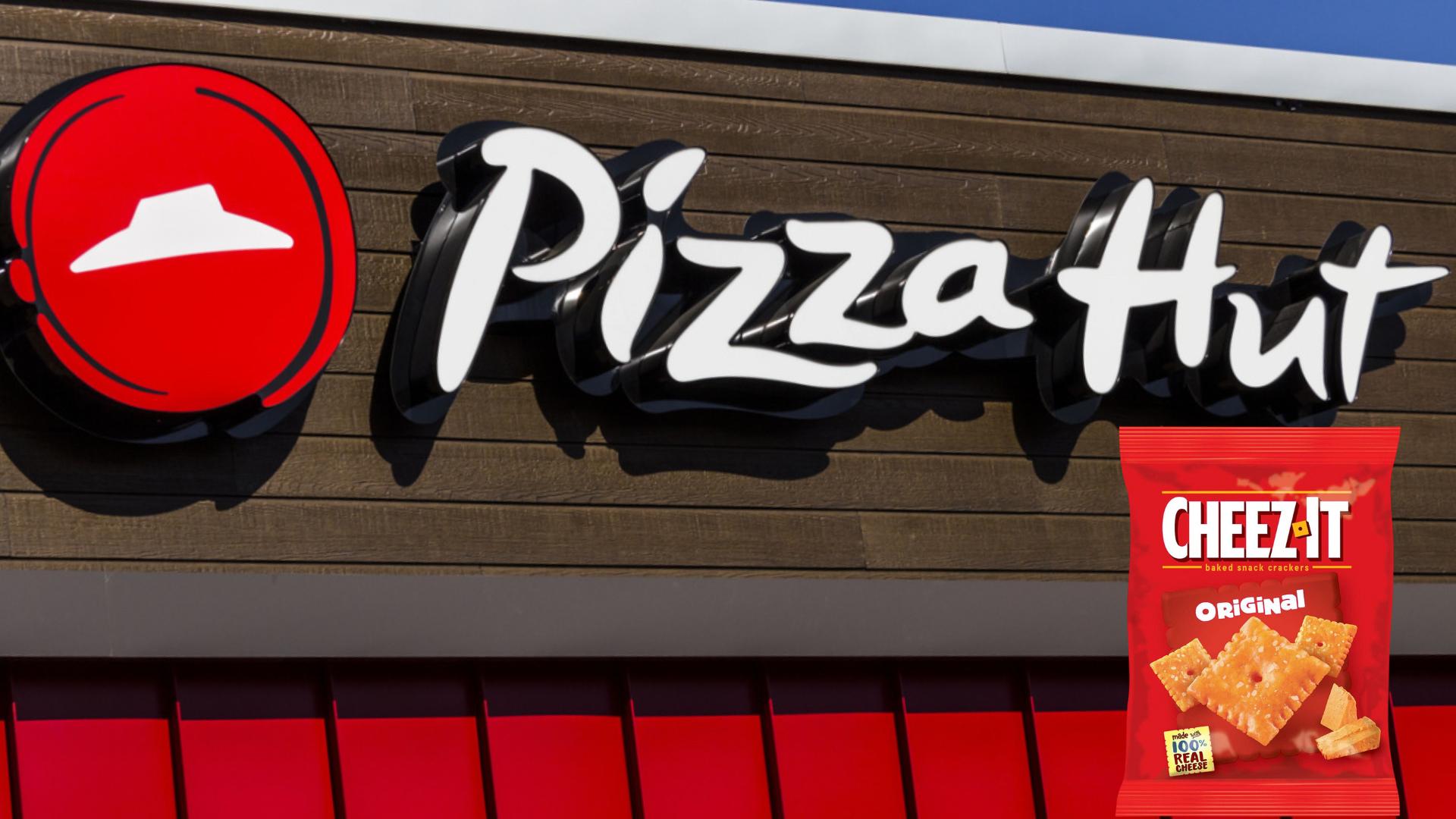
This is an odd one, but quite innovative, and at least, it worked to pique the curiosity of many young adults at the time.
- Challenge: Pizza Hut wanted to increase sales and appeal to a wider audience, especially families with young children and young adults (including college students).
- Solution: Pizza Hut partnered with Cheez-It to create a new pizza called the Stuffed Cheez-It Pizza.
- Results: The Pizza Hut and Cheez-It partnership has received mixed reviews. Pizza Hut has seen a small increase in sales of the Stuffed Cheez-It Pizza, and Cheez-It has seen a boost in brand awareness. However, numerous customers argued the thing should have never existed or that it tasted like neither of those things.
Key takeaways:
- The collaboration was successful because, even though it received mixed reviews, it had more supporters than detractors, making it a conversation or debate starter. Good and bad publicity are still results!
- The pizza is also unique and innovative. It was the only Stuffed Cheez-It Pizza on the market, even though it was more like a calzone. That made it stand out from other pizzas and appeal to consumers who were looking for something different.
- It was also a success for the specific demographic it was targeting.
How to Apply This Strategy to Your Restaurant?
Of all the examples I shared above, none is particularly relevant to the scale of small and medium restaurants with a reach that spans a city, or in most cases, a few blocks. But fear not, because the size of your restaurant doesn’t matter as long as you can find the right partners to collaborate with. In the following sections, I’ll show you the three main stages of this strategy, and the steps you must follow to apply it successfully in your restaurant.
1. How to Find Potential Partners and Collaborators for Your Restaurant

There are several ways to find potential partners to collaborate with, even if you have a small restaurant. Here are some best practices:
- Join local restaurant associations and chambers of commerce. This is a great way to meet other restaurant owners and businesses in your community.
- Attend local restaurant and business conferences. This is another way to meet potential partners and learn about new trends in the industry.
- Reach out to local small business owners. Think about other businesses in your community that your customers might be interested in. For example, you could partner with a local brewery to offer a special beer and burger combo, or partner with a local bakery to offer custom desserts.
- Meet with the owners of businesses close to your restaurant. These businesses probably share your target market, so they could be good partners for promotional campaigns or cross-promotions.
- Think creatively and consider the perspectives of your customers. The better you know your customers, the more likely you are to find interesting partnership ideas. Why? Because you can partner with any other business, even if it's not related to food! As long as your restaurant and your customers benefit from the partnership, it's probably a good idea. It's also key that your customers find the partnership relevant. A clear example of that is the Taco Bell and Xbox collaboration. They are different types of companies, but customers found value in the partnership, which made it relevant for them.
You can use the following steps to start the process of collaborating with another business.
2. Building and Managing Partnerships and Collaborations
2.1 Set Your Goals for the Collaboration

These are the keys you must consider to establish goals for a partnership with another business:
- Identify the benefits of the partnership as well as the needs of your business. What do you hope to achieve by partnering with another business? Do you want to increase brand awareness, attract new customers, or boost sales? What benefits would your restaurant benefit the most from?
- Consider the needs of your partner business. What are their goals for the partnership? Do they want to reach a new audience, promote a new product or service, or generate more leads? By understanding their needs, you can develop a mutually beneficial partnership. Maintaining open communication with the other company will help you achieve this.
- Set SMART goals. SMART goals are specific, measurable, achievable, relevant, and time-bound. For example, instead of setting a goal of "increasing brand awareness," set a goal of "increasing brand awareness by 10% in the next six months." This will help you establish a measurable point in the future that you can use to compare your growth in that period, mistakes you might have made while applying the strategy, and more.
- Align your goals with your overall business goals. Make sure that your partnership goals are aligned with your overall business goals. For example, if your goal is to increase sales by 15% in the next year, your partnership goals should help you achieve that goal.
Here are some examples of specific goals that a restaurant manager could set for a partnership with another business:
- Increase brand awareness by 10% in the next six months.
- Attract 100 new customers from the partner business's customer base.
- Generate $10,000 in sales from the partnership in the next year.
- Collect 500 email addresses from the partner business's customers.
Once you have set your goals, you can start to develop a plan to achieve them. This plan should include specific strategies and tactics that you will use to reach your target audience and achieve your desired results.
2.2 Think of Your Target Audiences to Come Up With a Value Proposition From Both Businesses

This is the most creative part of the process. By understanding the target audience of both businesses, you’ll be able to come up with interesting offers that can help both businesses achieve the goals established in the previous step. My recommendation is that you set a meeting with representatives from the other business and apply some of the following strategies to come up with ideas:
- Brainstorming: Brainstorming is a popular technique for generating a large number of ideas quickly. To brainstorm, gather a group of people and write down as many ideas as possible, without judgment. Once you have a list of ideas, you can start to evaluate them and choose the most promising ones.
- Reverse brainstorming: Reverse brainstorming is a technique for generating new ideas by turning existing ideas upside down. To reverse brainstorming, start by writing down a problem or challenge. Then, ask yourself how you could make the problem worse. The answers to this question can lead to new and innovative ideas.
- Asking questions: Think of the current challenge, which is the current goal both companies have. With that in mind, ask the representative to ask as many questions as possible. What are the different ways to achieve this goal? What are the pros and cons of each solution? What new ideas can we come up with? The goal of this strategy is to create an open discussion that can hold different perspectives and solutions to the same issue.
Another recommendation is that, if you can, invite a representative customer from each business or a single person that consumes services or products from both brands. That person would represent the average customer and could give you some insights into the minds of other customers, their likes and dislikes, among other things. At the end of this or after several sessions, you’ll have a couple of ideas worth exploring. You also might want to take a look at the goals you set before to improve or modify them.
Tip: Keep in mind the different types of partnerships to narrow down the type of ideas you come up with! Co-marketing partnerships, product development partnerships, and cross-promotion partnerships.
2.3 Define the Promotions, the Details, and the Necessary Infrastructure to Achieve the Goals
This step is very straightforward – iron out the details of this collaboration and take the necessary actions to ensure its success before applying it. This includes working on details such as the following:
- The duration of the promotion
- The type of promotion
- The budget both businesses will use for this strategy
- The tools that will be used to measure the success of the promotion
- The tools that will be used for the promotion (websites, website metrics, social media tools, etc)
You should also include the following:
- The goals (of both companies) of the partnership
- The expectations and “obligations” of both partners
- And more
In some cases, although not always, it’s a good idea to look for legal counsel when creating these strategies. However, in most cases, this won’t be necessary for small businesses. Once you’re done with this step, you can get started with the partnership and promotions!
3. Measuring the Success of Partnerships and Collaborations

Here are a few simple tools or methods you can use to measure the success of a partnership:
- Sales: One of the most common ways to measure the success of a collaboration or partnership is to track sales. For example, if you partner with another business to offer a special promotion, you can track how many sales you generate from the promotion.
- Brand awareness: Another common metric for measuring the success of a collaboration or partnership is brand awareness. You can track how many people are aware of your brand and the collaboration or partnership by conducting surveys or tracking social media engagement.
- Customer satisfaction: It is also important to track customer satisfaction with the collaboration or partnership. You can do this by conducting surveys or collecting feedback from customers.
- Return on investment (ROI): Finally, you can also measure the success of a collaboration or partnership by calculating the ROI. This is done by comparing the costs of the collaboration or partnership to the benefits that you generate from it.
Another good practice is to worry about the results achieved by the partner business. Plus, you should also maintain an open communication channel during and after the promotion or partnership. That way, if the partnership is positive, you can look for new ways to collaborate, improve the promotion, create new ones, and more.
Look For Local Collaboration and Partnership Opportunities to Boost Your Restaurant’s Growth!
Restaurant partnerships can be a great way to boost sales, attract new customers, and increase brand awareness. By partnering with other local businesses, restaurants can offer their customers a unique and memorable experience. Additionally, this will all benefit the local community and other businesses, which can also help boost your city's economy, and ultimately, improve the performance of your restaurant. The best part is that you’re not limited to collaborating with other restaurants – you can find common ground with all kinds of businesses that share the same customer base or target audience. You just have to be open to the opportunity and put your restaurant out there.
After applying this strategy, all you’ll have to do is measure your success – and Waiterio can help you with that. Waiterio offers a restaurant POS app that has a variety of features that can help you track sales, manage your menu to create limited-time offers, and even create a website equipped with an online ordering system. Learn more about Waiterio here.
